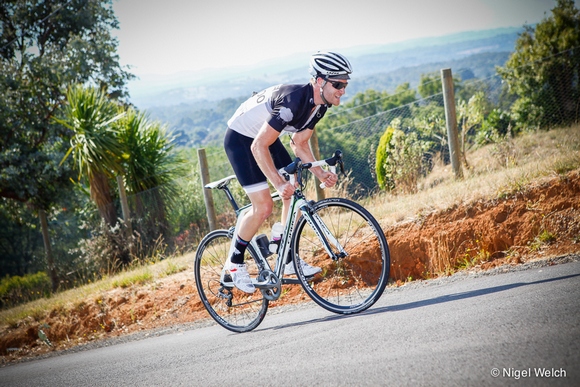Cycling field tests are a great way to track progress. Power numbers are great in a race but there are a lot of external factors that can influence how much the rider puts into the pedals. A cycling field test removes those factors; it is only the rider versus the road. The data that results is easily comparable with later tests with similar conditions.
Replicate the Situation
The most important component of a field test is that it is the same situation each time – the same road, the same terrain, the same time of day and weather (if you can control it), the same bike, and the same warm up. This way the only data points that change from the cycling field test are time, power, and heart rate. What you will use depends on the equipment available to you.
Setting Your Zones
Besides tracking the progress of your fitness, cycling field tests will give you data to adjust your training zones. If your zones are too low, training is too easy and you will not get stronger. If they are too hard, you will not achieve your training goals and have the potential for discouragement and burnout from pushing too hard. Appropriate zones will challenge you enough that it is hard but achievable.
Where to Test
The most important part of the location you choose is that you have at least twenty minutes of uninterrupted riding at high speed. It would be easy to do it indoors on the trainer, but then you may end up with zones that may not be a true reflection of what you are doing outdoors. Keep this in mind if you do decide to use a trainer.
The second most important factor of location is that you can keep up a consistent effort. A big descent in the middle of an effort does not make for consistent power numbers. If you are lucky enough to live near a long climb, use it. It’s the best way to control external factors such as wind and it’s easier to maintain a maximal effort.
Warm Up!
Get in a good warm up. Starting a test on cold muscles and an un-primed cardiovascular system will only lead to misery and poor data from your cycling field test. Find a good warm up routine and stick to it before each test. It should be hard enough that you feel like you are working during the warm up but have plenty of energy left to tackle the test.
The Simple Test
The first of three cycling field tests is the easiest. All you need is that stretch of road, your warmed-up body, your bi,e and a stopwatch. Pick a favorite stretch of road and attack it, timing yourself each effort. Track your progress over time and see if your training is paying off.
The Heart Rate Test
If you have a heart rate monitor, this is the cycling field test for you. The only caveat is that you will need thirty minutes of open road, not twenty. Warm up well. At the start of the test, go into time trial mode. Do not go full gas from the start, but ease into the effort. After the first ten minutes, you should have reached your target pace and effort, which should be blindingly hard, but not so hard that you cannot finish off the twenty minutes.
The data collection comes from the last twenty minutes; you want your average heart rate only for that section of the test. That number is a very, very close approximation of your lactate threshold heart rate without getting blood drawn. Put it into a calculator and you will get your training zones.
The Power Test
The cycling field test with power is the most involved but it gives very interesting and comprehensive data. You must do each of the following efforts at full gas, with ten minutes rest in between: five minutes, 5 seconds, twenty minutes and one minute. The test will give you a normalized power that you can expect from a race effort. It will also show you where your strengths and weakness lie, especially when you track the data on this chart.
Keep in mind that the one minute power might be a bit lower than if you went out fresh and cracked off a huge one minute effort. In this order it simulates the finish of the race – you put in your time in the breakaway, now it is time to attack for the win. You will not set any power records in that situation, but you do need to do the best that you can.
To really get into the data, use a program like Golden Cheetah for analysis. It will also give you your zones, anaerobic capacity and whole host of other useful data. If you manage to track every ride with a power meter, Golden Cheetah or another similar program will be indispensable.
Putting the Cycling Field Test to Use
Try to test every six weeks or so during the training season. Your training zones will stay up to date and you will get the most out of your time on the bike. Track your progress and watch as you make big gains with more precise training!
